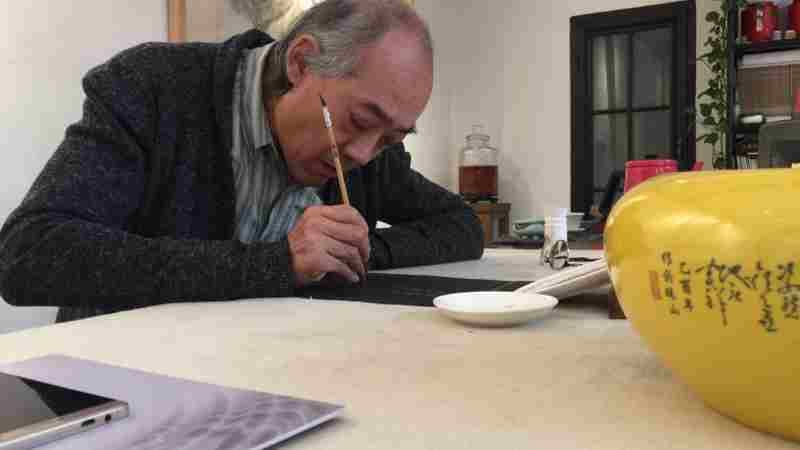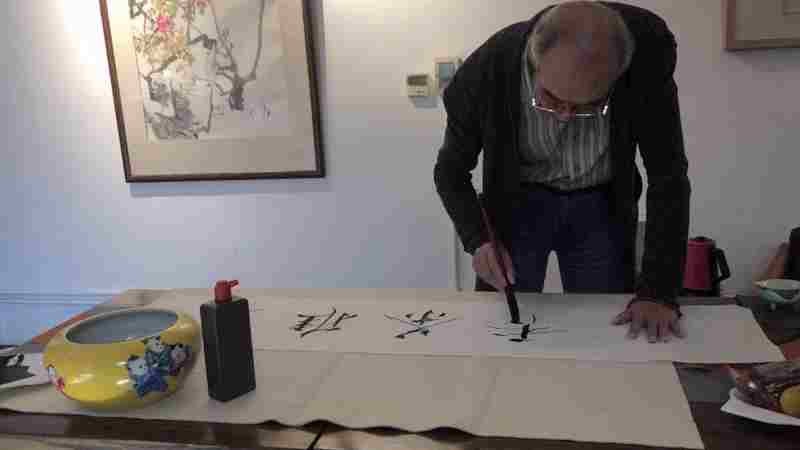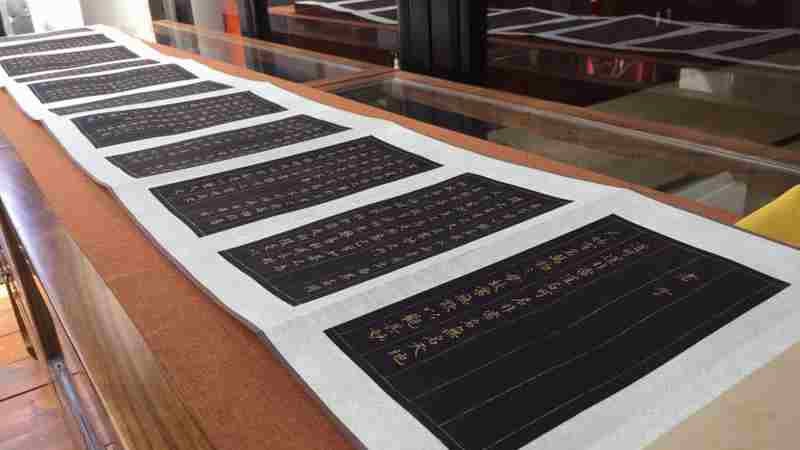
Culture
17:22, 06-Oct-2017
Artist shares why calligraphy is more than just characters
Ty Lawson

In China, calligraphy is referred to as “Shūfǎ,” which means "the way; the art form of writing; a piece of artistic writing."
It is an art form deeply rooted in Chinese culture and celebrated around the world.
CGTN Digital spent the afternoon with calligraphy artist, Yan Huizhong in his Beijing studio in the heart of China's capital city's historic hutongs.

Calligraphy artist Yan Huizhong working in his Beijing studio./CGTN Digital
Calligraphy artist Yan Huizhong working in his Beijing studio./CGTN Digital
“Calligraphy for me is not a job. Because of my family’s tradition,” he said. “The children in my family need to read and practice writing characters.”
Yan has been perfecting his craft of calligraphy since the age of 5. For more than 50 years now, he said he spends at least two to three hours each day practicing calligraphy.
“When you practice a lot, you can put these skills into your mind,” Yan said. “And then you need to implement these skills, this is calligraphy. This also is a process.”
Calligraphy is very complicated and dates back to 4,000 B.C.
Here is a video of Yan Huizhong doing calligraphy:

While learning how to write in Chinese can be difficult, Yan insists non-Chinese are capable of learning the graceful art form.
“Chinese calligraphy can be understood by foreigners,” he said. “Calligraphy is about learning to write characters.”
To read a newspaper requires knowledge of around 3,000 Chinese characters: a well-educated person is familiar with about 5,000 characters. In total, more than 50,000 characters exist, the great majority are never used.

/CGTN Digital
/CGTN Digital
Even so, Yan said calligraphy is just as important today as it was in ancient times.
“Nowadays, learning calligraphy is misunderstood by parents,” he said.
Yan said he finds calligraphy to be a relaxing mechanism for him.

/CGTN Digital
/CGTN Digital
“Calligraphy is practicing you, your inner thought,” he said. “For example, when you write Buddhist text, the calligraphy can make you peaceful.”
Yan said calligraphy is more than just the characters.
“I need to practice calligraphy in my whole life,” he said. “But writing characters is about a moment. And we can’t change it. Writing characters is not like drawing paintings. Writing characters needs to finish in a moment. This is Kung Fu.”
Interview and translations: Xu Tingting

SITEMAP
Copyright © 2018 CGTN. Beijing ICP prepared NO.16065310-3
Copyright © 2018 CGTN. Beijing ICP prepared NO.16065310-3